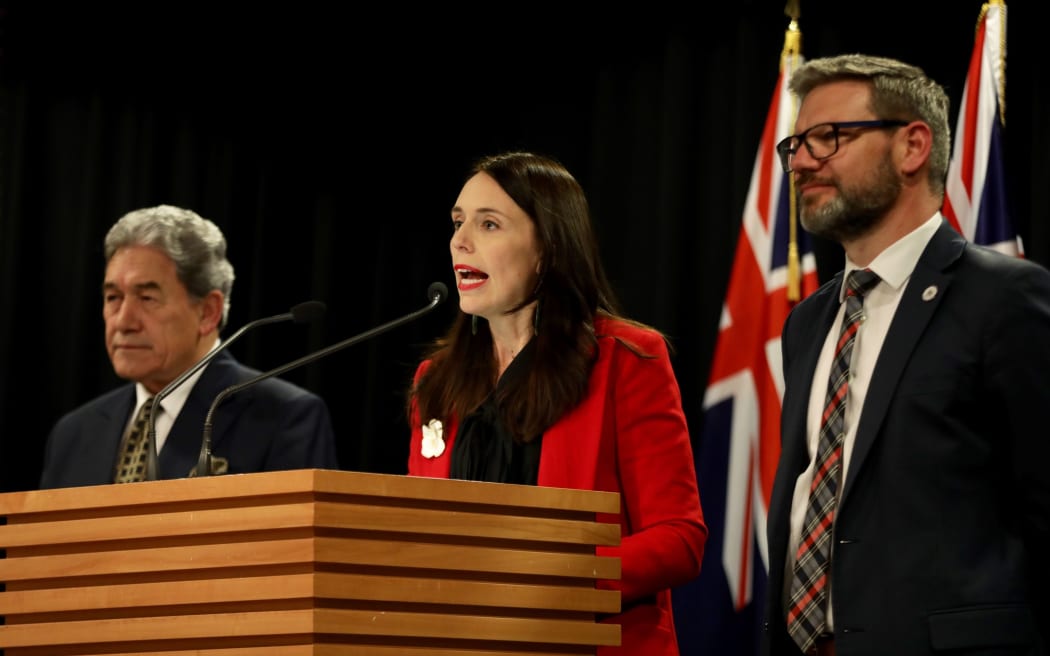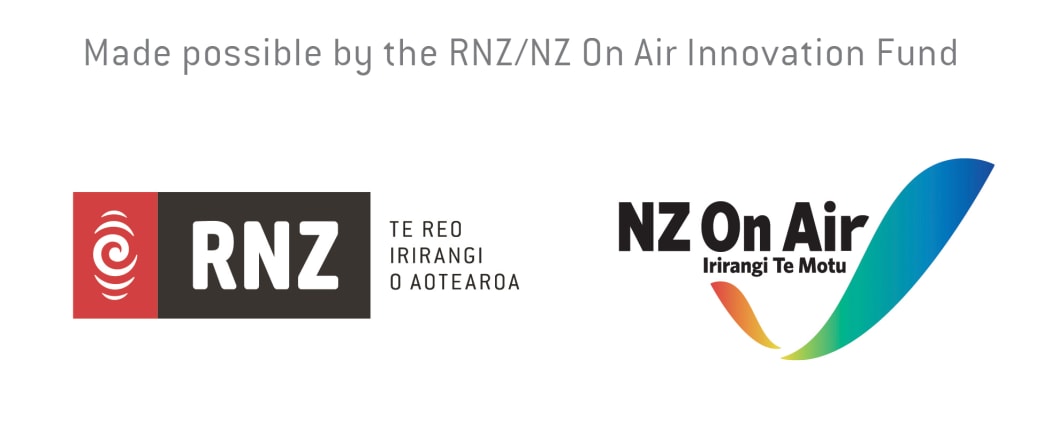
Prime Minister Jacinda Ardern - flanked by deputy PM Winston Peters and Immigration Minister Iain Lees-Galloway - announces the increase in NZ's refugee quota. Photo: RNZ / Rebekah Parsons-King
The Government’s shaken up its refugee targets and among the changes is the scrapping of a policy dubbed racist and discriminatory.
The ‘family link’ rule barred African and Middle Eastern refugees from settling in New Zealand unless they already had family here.
The policy meant New Zealand fell well short of its resettlement targets for people from those regions.
“In the 2017/18 year… only 1.2 per cent of our refugees came from the Middle East and 5.3 per cent from Africa,” says TVNZ reporter Jehan Casinader, who broke the story on the Sunday programme in May.
That’s despite a target of 14 per cent from both regions.
“We brought in a rule that prevented us from meeting our own refugee targets… and no one really took notice of this.”
Casinader was covering the Christchurch mosque attacks when he heard about the little-known policy during discussions with advocate Guled Mire.
“He said, did you know New Zealand actually has a Muslim ban akin to Donald Trump’s?
“I was incredulous, and cynical, and sceptical about that, and remarkably when I looked at the documentation that community groups had got through the Official Information Act… I found more or less, we did.”
The family-link policy came into effect under National in 2009 and only applied to refugees from Africa and the Middle East.
But the rationale behind it remains unclear.
“The reasons for that policy are redacted,” he says, referring to further documents obtained through the OIA.
The documents did, however, cite “broad security concerns” behind the rule.
“We know that there was, as there still is now, sentiment in the community that people from Africa and the Middle East are potential terrorists, they’re dangerous… and we can only guess, but certainly community advocates believe that type of fear fed into this policy.”
Scrapping the family-link rule for Middle Eastern and African refugees dominated most of the headlines from the press conference it was announced in, but other changes were also introduced as part of the three-yearly quota review.
These include the Government nudging the refugee allocation from Africa and the Middle East up from 14, to 15 per cent.
Half of the refugees New Zealand takes will be from the Asia-Pacific region, and the number of spots set aside for 'large-scale' refugee crises will double, to 200.
The changes are on top of a large increase to the overall quota, from 1000 to 1500 a year.
Casinader says politicians were digging in their heels on the family-link issue, refusing to budge on the issue ahead of a three-yearly review this year.
“They could’ve got rid of this policy two years ago when they came into Government. It’s not a big deal; it’s not a change to the number of refugees coming into the country … it’s the fact we were shooting ourselves in the foot by not allowing our own officials to meet the targets we’d set for ourselves.
“We don’t have the authority, or the right, and certainly not according to the conventions we’ve signed up to, to just pick and choose refugees from which parts of the world we want based on no real justification or security concern.
“That’s what this policy did – it allowed fear to dictate how we approached a key area of policy and that was wrong.”

Photo: RNZ

